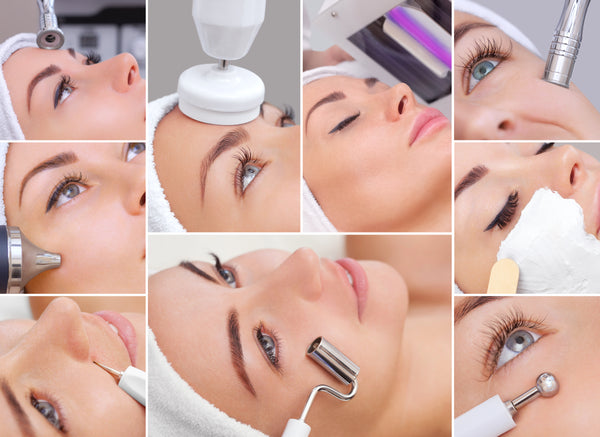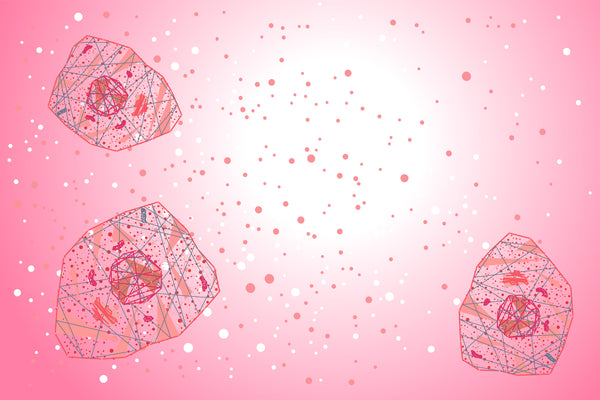
Peels are one of the most useful tools in a skin care professional's arsenal, but they must be used correctly to ensure not only efficacy but also safety. Listed here are five ways to modify a peel to safely increase skin care efficacy.
1. The Type of Acid Used
When treating clients using chemical exfoliation, it is important to understand the properties, uses, and contraindications of the acids being applied to the skin. There are several chemical peel options available to clients with various skin types and conditions. Glycolic acid and lactic acid are the two most common alpha hydroxy acids (AHAs), but other common peel acids are listed here.
Glycolic acid has the smallest molecular size of the AHAs and has also been shown to stimulate collagen production. Glycolic acid is ideal for treating acne grades I and II, superficial pigmentation, and fine lines and wrinkles.
Lactic acid, another AHA with a larger molecular structure, additionally provides the benefits of skin lightening and hydration, making it one of the most widely used exfoliants on the market. Lactic acid is good for all skin types but is commonly recommended to clients with sensitive skin conditions including rosacea.
Salicylic acid is a beta hydroxy acid (BHA) that is lipid-soluble, meaning it is attracted to oil. Salicylic is commonly used to treat oily, acneic skin, keratosis pilaris, psoriasis and calluses.
The modified Jessner’s peel is also a very popular option, it is a combination of 14% resorcinol, 14% salicylic acid, and 14% lactic acid in an alcohol base. For more than a decade, the Jessner’s peel has been used to treat combination to oily skin with signs of photodamage; however, it is not recommended for use on sensitive skin types due to the high alcohol content.
Trichloroacetic acid (TCA) is a synthetic acid that has shown to be safe for use on the skin as a peeling agent with no systemic effects. TCA peels are commonly used by physicians as a medium-depth peeling treatment due to its effect on collagen stimulation and skin tightening. Estheticians use TCA at lower percentages for superficial peeling on those concerned with aging, acne, hyperpigmentation and mild scarring.
2. Percentage and pH
Having a thorough understanding of the pH scale and how it effects the skin is a key component to performing the proper chemical peel. The pH scale ranges from 0 to 14; 0-6.9 is acidic, 7 is neutral and 7.1-14 is alkaline. The skin has a pH of approximately 4.5-5, so using products with a pH less than that of the skin are necessary to obtain desired results from a treatment. Products that have a pH of 3.0 or less are ideal for exfoliating treatments and peels, while products with a very low pH (under 2.0) have the potential to induce crusting and necrosis.
The activity of the peel also depends on the percentage of acid in the solution; the greater this percentage, the stronger the acid concentration. Chemicals with a lower pH are more acidic and can cause greater injury to the skin. This is why, as professionals, we must look at each product’s pH along with the percentage of the acid, because it can vary depending on the acid or the product line.
3. The Amount of Product
The amount of product that is applied to the skin can change due to several factors. For instance, application techniques can make a peel more or less aggressive. There are various application methods that can be used including the use of a cotton square, gauze, large cotton swab and fan brushes to name a few. When using a cotton-based product, the cotton will absorb some of the acid and less will be applied to the skin, making it gentler. On the other hand, using a fan brush will deliver more acid to the skin, making it more aggressive.
Along the same lines, the pressure used by the technician can also alter the depth of a peel. One person may use a very light touch while the other uses pressure; the one with more pressure will deliver more product into the skin. This is one of the reasons I believe that it is more important to gauge the client’s skin reactions opposed to focusing on a certain amount of time or layers that are applied to the skin. As estheticians, mild erythema would be the end-point for a peel. Physicians often look for an even blanch across the skin .If the esthetician sees any blanching, that means it has passed the epidermis and no additional layers should be applied.
4. Condition of the Skin
The condition of the client’s skin can make a big difference in the aggressiveness as well as the results of a chemical peel. It is best to have the skin prepped properly with the correct products to ensure an even and effective peel. For example, a client that has never had a peel before and does not care for their skin will likely have several layers of dead skin to go through before getting to the level of real results. All clients receiving peels should at least be using proper home care including antioxidants, moisturizer, and sunscreen. For optimal results, the use of a mild keratolytic agent, such as glycolic acid (5% to 10%) or salicylic acid (2% to 5%), or mild retinoids can help jump-start the exfoliation process to ensure a more even peel. However, these products should be discontinued three days prior to the peel to decrease the chance of side effects. Clients with hyperpigmentation concerns, or those with darker skin types should use skin lightening agents for a minimum of two weeks prior to treatment to reduce the risk of post-inflammatory hyperpigmentation. This will increase the results of the peel and help your client achieve their desired results faster.
5. Prepping the Skin
Degreasing the skin is an important part of the peel process, the more oil removed from the skin, the deeper the peel will go. Most companies have a specific prepping solution to use with their peels, many of which contain alpha hydroxy acids with an alcohol base. Alcohol itself can also be used. Some protocols call for acetone, which will make the peel more aggressive by completely stripping the skin of oil.
Taking it a step further, the skin can be prepped with dermaplaning or microdermabrasion. Dermaplaning uses a scalpel to exfoliate the epidermis and rid skin of fine vellus hair, while microdermabrasion utilizes a combination of suction and a rough surface to exfoliate. These methods not only help to degrease but allow the peels to go deeper be removing the outermost layers of dead skin cells. Physicians may use salicylic acid or even a layer of Jessner’s for medium to deep peels. On the other hand, to do a peel on more sensitive skin you could just use a toner or skip the degreasing part all together. There are also protocols from certain peel companies where you can use a moisturizer first to decrease the aggressiveness of a peel.

 This article appeared in the November 2017 issue. Find more on this topic in the digital magazine
This article appeared in the November 2017 issue. Find more on this topic in the digital magazine



0 comments